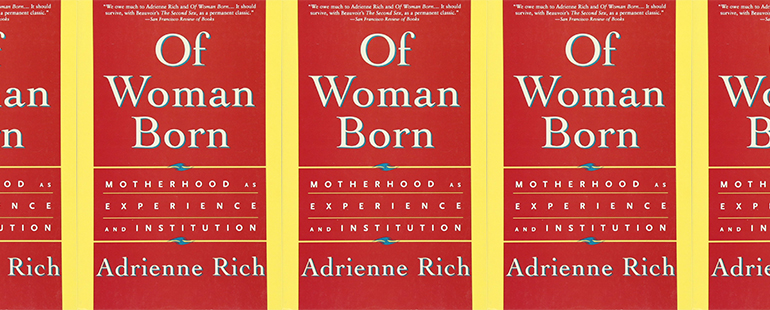

In effect she was dragging motherhood from the confines of the bedroom or the nursery to the public sphere of intellectual debate. What was truly new about her approach was, first, the blend of personal testimony and academic reflection (which has now become the new normal with the trend of personal essays), and second the intensely political focus. Around that time, in 1976, she published Of Woman Born: Motherhood as Experience and Institution which was to become the founding text in the field of maternal studies, announcing all the major themes that were to be explored by those who wrote about motherhood after her: maternal ambivalence, the dilemmas of the writing mother, the hold of patriarchy over the experience of birth and motherhood, etc. She married at a young age and quickly had three sons between the ages of 26 and 30 before she eventually left her husband to live her own life as a lesbian. Many books have been written about motherhood since Rich’s Of Woman Born, yet the sense of urgency which pervades it still makes it today a compelling read.Īdrienne Rich (1929-2012) was an American poet, an academic and a feminist activist. Although it was written in 1976, reading it today still makes the reader feel like a major breakthrough is happening, a new light is being cast on a field which had been kept in the dark for ever.

Rich’s is a mammoth of a book, a sort of encyclopedia of academic motherhood. It contains all the complexities and ambivalences of motherhood–the anger, the frustration, the fragility, and the joy as well.

The mothers: collecting their children at school sitting in rows at the parent-teacher meeting placating weary infants in supermarket carriages straggling home to make dinner, do laundry, and tend to children after a day at work fighting to get decent care and livable schoolrooms for their children waiting for child-support checks while the landlord threatens eviction getting pregnant yet again because their one escape into pleasure and abandon is sex forcing long needles into their delicate interior parts wakened by a child’s cry from their externally unfinished dreams–the mothers, if we could look into their fantasies–their daydreams and imaginary experiences–we would see the embodiment of rage, of tragedy, of the overcharged energy of love, of inventive desperation, we would see the machinery of institutional violence wrenching at the experience of motherhood.


 0 kommentar(er)
0 kommentar(er)
